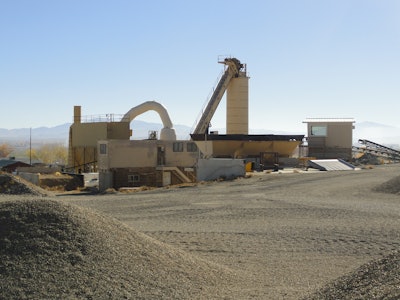
Last month, I talked about the strategies for combating employee theft and the importance of yearly records analysis to identify such problems. This involved the material audit report component. But there are other potential benefits to this type of comprehensive records keeping at your asphalt plant.
As I travel around the U.S. and beyond analyzing plant problems and trying to correct them, I am always astounded by two things. One is when I ask, “How long has the plant been doing this?” and the answer is, “it’s always done that.” I want to say, “Why don’t you fix it?”
The other thing is when I am trying to analyze burner issues and I ask, “What was your fuel consumption last month?” Most of the time I get, “We don’t keep track of that, so I don’t know.” This is a very disappointing answer to me. How can you not know this data and competently manage an asphalt plant?
One of the most important strategies for success at your asphalt plants is a little concept called focused analytical data. Several components come in to play in this process: operational audit reports, material audit reports, and mechanical audit reports.
Understand your operations
One benefit of the operational audit report is that you will have a record of burner fuel usage across the entire year. These records will include the wet winter and spring weather and also incorporate the bone dry summer and early fall conditions. As a part of the operational audit report, I ask the QA/QC test lab keep daily records of moistures, AC contents and sample results, noting any irregularities. I ask that they graph this data weekly and turn it in at least on a monthly basis. From there it is up to the production manager to organize and present this data to upper management in a manner that can be analyzed, understood and related back to conditions that existed at your asphalt plant at the recorded times.
By using this information you can go through these records and calculate your fuel usage correlated to incoming moisture conditions. By graphing your plant report data and comparing it with your test lab moisture records for these periods of time you can see trends in fuel use. Trends that if read and understood will alert you when you need to work on burner tuning issues, drum flighting wear or exhaust system issues.
Creating trends
For the next few issues I am going to talk about burners and issues relating to costing you fuel economy. As we all know, the thing that affects fuel usage the most is incoming aggregate moisture content. Obviously if your incoming moisture from the cold feeds is 7%+ you are going to consume more fuel drying it than you will in the summer when the moisture is 3% or less. We all know this, but the trick is to use these records to plot TRENDS in fuel usage over a period of time. What was your fuel consumption the last time your production rate and incoming moistures were the same? By comparing this data you should be able see any problems as they develop.
I have always recommended that companies do a daily plant report. I have written about these in the past and even offered a free template on my webpage, hotplantconsulting.com/articlefourteen.html#howto so please feel free to download them.
The important thing is that these reports should include a record of the day’s fuel use, the incoming aggregate moistures, RAP moisture and percent, total day’s production, liquid AC inventory, the day’s AC usage, and quantify any waste. This report should also include weather data like temperature, cloudy or clear, windy or calm. All of these things affect fuel usage to some degree. With these daily records, you can then plot weekly trends, monthly trends, or whatever is suitable for your plant manager.
Cliff Mansfield, owner of Cliff Mansfield Inc., operates C.M. Consulting, an asphalt repairing, upgrading and operational training company. He has over 40 years of experience in the industry. Visit hotplantconsulting.com for more info.



















